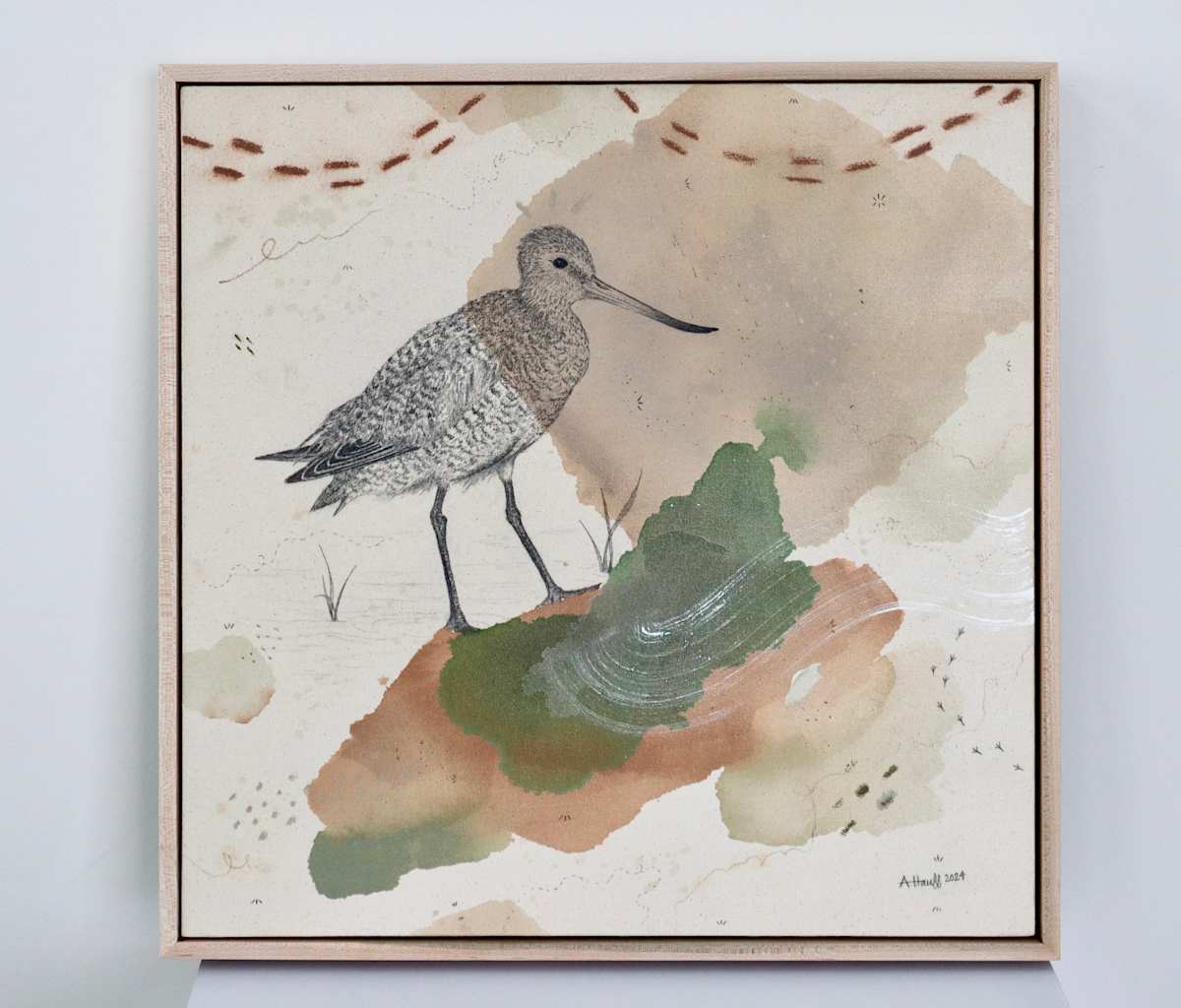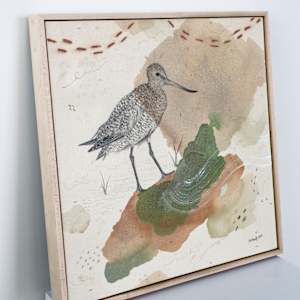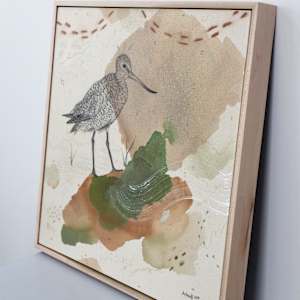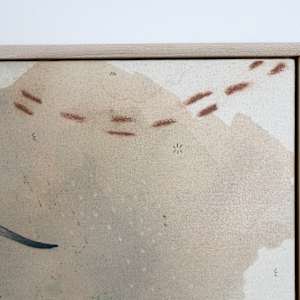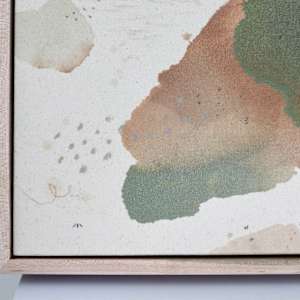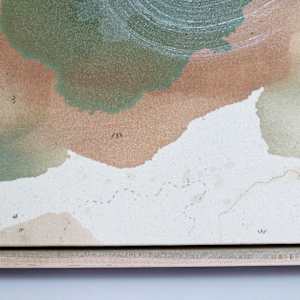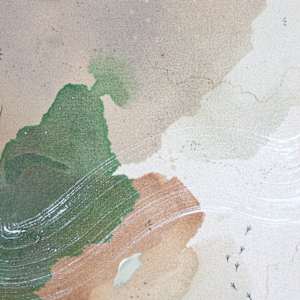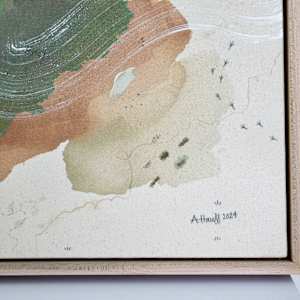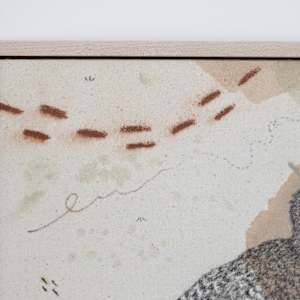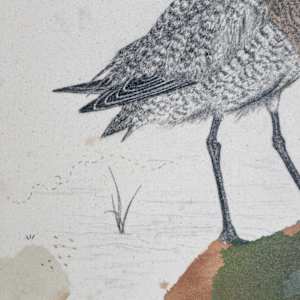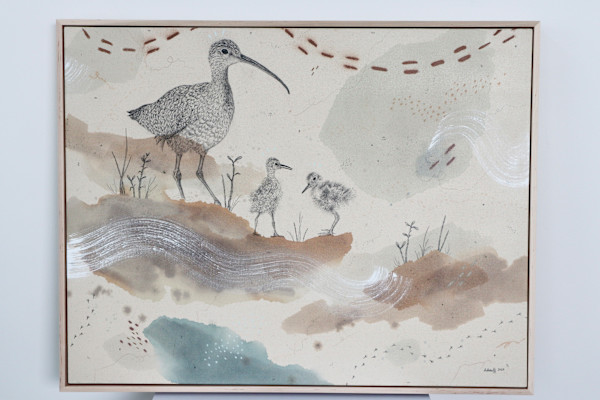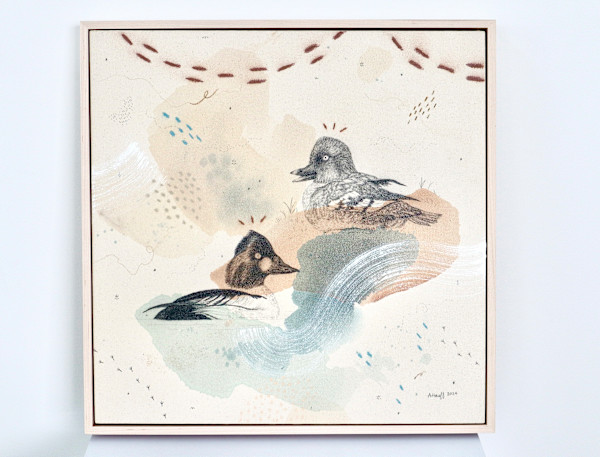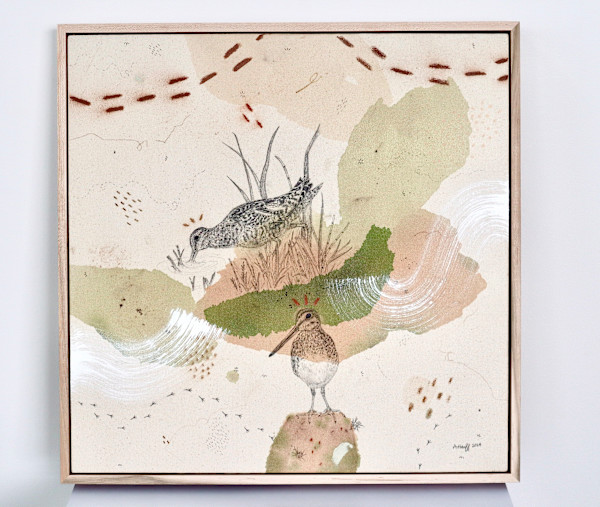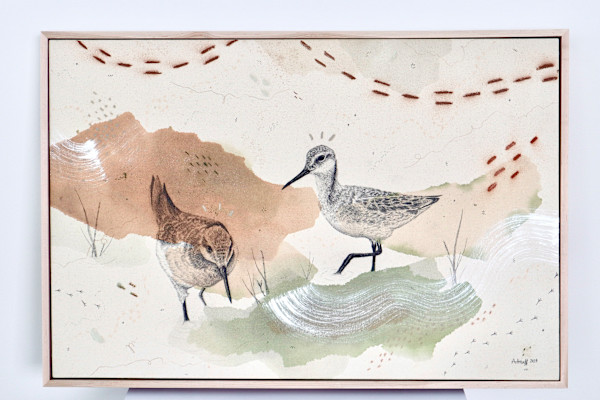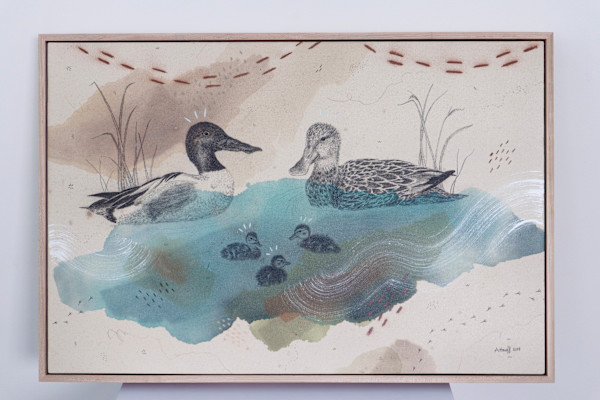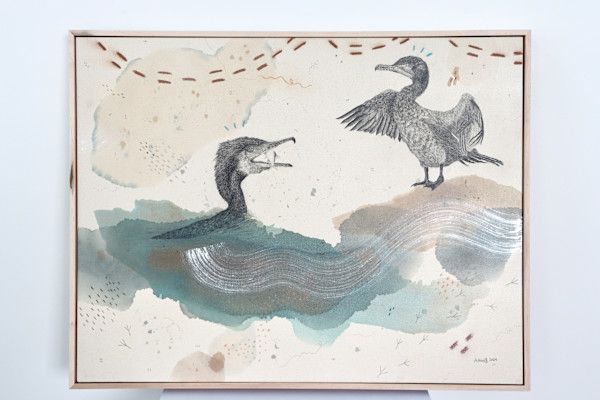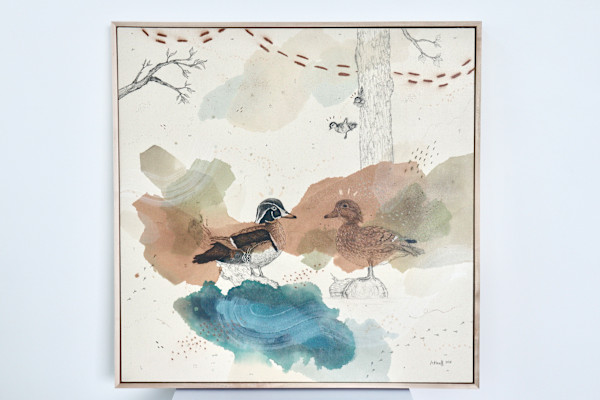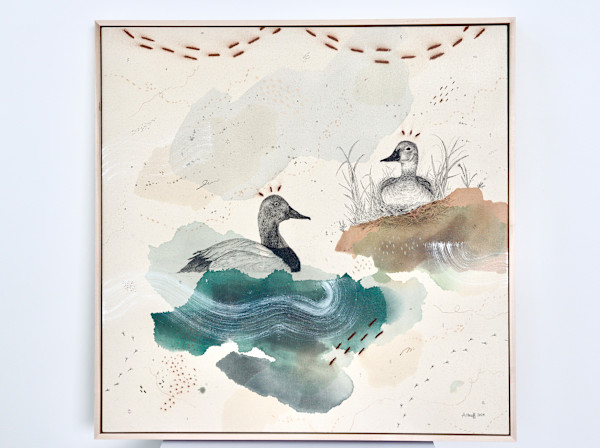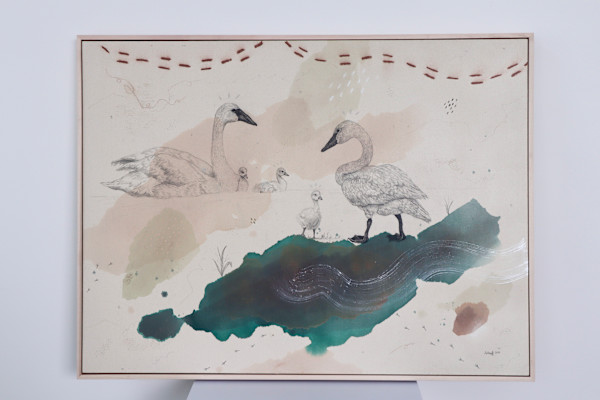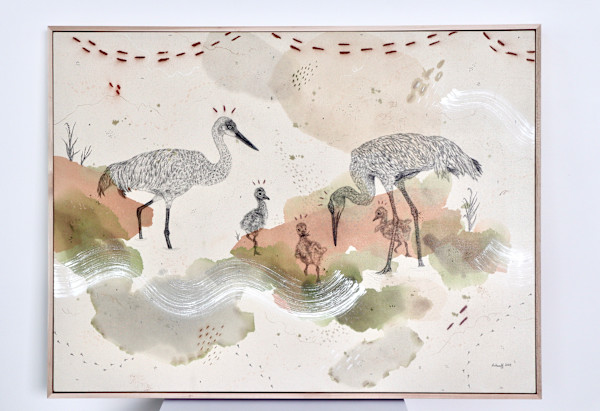A graceful member of the sandpiper family, the Marbled Godwit can be found almost exclusively in the northern prairies in the summer and coastal regions over winter. They flock together, occasionally with other sandpipers, and forage by probing deep in the mudflats for food. Their long, sword-like beak is slightly upturned at the end and two-toned. Diet includes aquatic invertebrates, worms, insects, aquatic plant tubers, leeches, and small fish.They forage almost exclusively on plant tubers during migration.
Territories are large, often more than 200 acres, including nesting and feeding areas. Within these territories, males perform flight displays early in the breeding season to attract a mate. They fly up to 300 feet above the ground and circle their territory, flying with slow wingbeats and calling. Once paired, they form monogamous bonds for the breeding season. They breed in native shortgrass prairie, avoiding areas with taller vegetation. Males make several shallow depressions in the ground with their feet, and females choose which one to lay the eggs in. She lines the nest with fine grasses. They don’t spend the nonbreeding season together, but males and females frequently return to the same area to breed year after year and often breed with the same mate. On the wintering grounds, they forage in groups with other shorebirds.
Marbled Godwits remain on the Yellow Watch list for conservation. Though they are relatively stable, their populations have been greatly impacted by hunting and loss of habitat. Prior to 1900, Marbled Godwits bred in Wisconsin, Iowa, Nebraska, and Minnesota, but no longer breed there. Hunting and habitat loss as a result of the conversion of prairies to agriculture contributed to the extirpation of breeders from these areas. Coastal wintering sites have also been lost or degraded.
Original mixed media on raw stretched canvas with maple float frame. Alternative hardwood frames available upon request.
- Subject Matter: shorebirds/waterfowl
- Collections: Shorebirds & Waterfowl of the Prairie

